Java知识点总结:想看的可以从这里进入
目录
- 3.6、文件上传、下载
- 3.6.1、文件上传
- 3.6.2、文件下载
- 3.7、国际化配置
3.6、文件上传、下载
3.6.1、文件上传
form 表单想要具有文件上传功能,其必须满足以下 3 个条件。
- form 表单的 method 属性必须设置为 post。
- form 表单的 enctype 属性设置为 multipart/form-data。
- 至少提供一个 type 属性为 file 的 input 输入框。
在SpringMVC 中为我们提供了文件解析器,来实现上传文件的功能,MultipartResolver 本身是一个接口,我们需要通过它的实现类来完成对它的实例化工作。
| 实现类 | 说明 | 依赖 | 支持的 Servlet 版本 |
|---|---|---|---|
| StandardServletMultipartResolver | Servlet 内置的上传功能。 | 不需要第三方 JAR 包的支持。 | 仅支持 Servlet 3.0 及以上版本 |
| CommonsMultipartResolver | 借助 Apache 的 commons-fileupload 来完成具体的上传操作。 | 需要 Apache 的 commons-fileupload 等 JAR 包的支持。 | 不仅支持 Servlet 3.0 及以上版本,还可以在比较旧的 Servlet 版本中使用。 |
<!-- CommonsMultipartResolver依赖 支持文件上传(注意此组件在Spring6被移除了)-->
<dependency>
<groupId>commons-fileupload</groupId>
<artifactId>commons-fileupload</artifactId>
<version>1.3.1</version>
</dependency>
<dependency>
<groupId>commons-io</groupId>
<artifactId>commons-io</artifactId>
<version>2.8.0</version>
</dependency>
CommonsMultipartResolver我们在学习Servlet组件的时候使用过,它在springMVC中使用时需要配置文件解析器,其中multipartResolver这个名字是固定的一旦更改,就无法完成文件的解析和上传工作。
<bean id="multipartResolver" class="org.springframework.web.multipart.commons.CommonsMultipartResolver">
<!--编码格式 -->
<property name="defaultEncoding" value="UTF-8"/>
<!--上传文件大小-->
<property name="maxUploadSize" value="103424"/>
<!-- <property name="maxUploadSizePerFile" value="102400"/>-->
<property name="resolveLazily" value="true"/>
</bean>
在使用时直接向Controller的方法中传入参数即可 MultipartFile file即可使用:
@RequestMapping("")
public void multipartFileTest(MultipartFile file){
}
| 内部方法 | 作用 |
|---|---|
| byte[] getBytes() | 以字节数组的形式返回文件的内容。 |
| String getContentType() | 返回文件的内容类型。 |
| InputStream getInputStream() | 返回一个 input 流,从中读取文件的内容。 |
| String getName() | 返回请求参数的名称。 |
| String getOriginalFillename() | 返回客户端提交的原始文件名称。 |
| long getSize() | 返回文件的大小,单位为字节。 |
| boolean isEmpty() | 判断被上传文件是否为空。 |
| void transferTo(File destination) | 将上传文件保存到目标目录下。 |
<form th:action="@{/student}" method="post" enctype="multipart/form-data">
<table style="margin: auto">
<tr>
<td>照片:</td>
<td><input type="file" id="chooseImage" name="photos" multiple="multiple" required><br>
<span id="img-div"></span></td>
</tr>
<tr>
<td colspan="2" align="center">
<input type="submit" value="提交">
<input type="reset" value="重置">
</td>
</tr>
</table>
<!-- 保存用户自定义的背景图片 -->
<img id="preview_photo" src="" width="200px" height="200px">
</form>
使用Controller上传图片
@RequestMapping(value = "/uploadPhoto", method = RequestMethod.POST)
public String uploadPhoto(MultipartFile photo, HttpServletRequest request,Model model) {
String realPath = request.getSession().getServletContext().getRealPath("/upload/");
System.out.println(realPath);
File fileDir = new File(realPath);
if (!fileDir.exists()) {
fileDir.mkdir();
}
String filename = photo.getOriginalFilename();
System.err.println("正在上传的图片为:" + filename);
String newFileName = UUID.randomUUID() + filename;
try {
//将文件保存指定目录
photo.transferTo(new File(realPath + newFileName));
model.addAttribute("message","上传成功");
model.addAttribute("filename",newFileName);
} catch (Exception e) {
model.addAttribute("message","上传失败");
e.printStackTrace();
}
return "page/success";
}
<h1 th:text="${message}"></h1>
<table>
<tr>
<td>照片:</td>
<td th:if="${message}eq'上传成功'">
<img th:src="@{'http://localhost:8080/upload/'+${filename}}" width='200px' height='200px'/><br>
</td>
</tr>
</table>

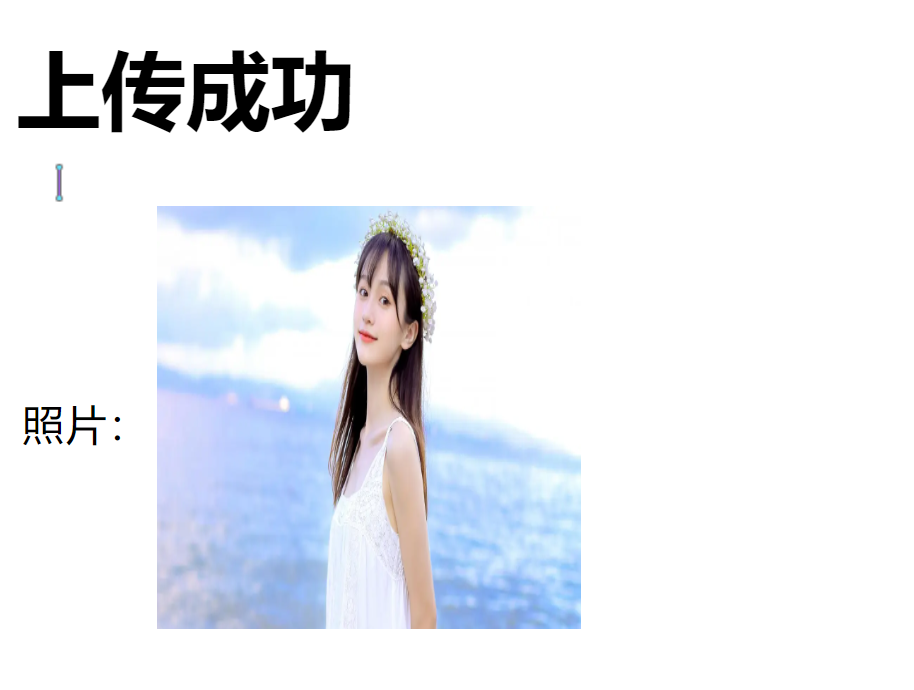
这里有一点要注意,如果使用的eclipse,那么使用request.getSession().getServletContext().getRealPath(“/upload/”),获取的就是部署到Tomcat的路径,可以直接获取,但是如果你使用的是Idea的话,它是把图片上传到了target这样一个文件夹内
如果想获取这个路径的图片可以通过tomcat设置一个虚拟的路径:
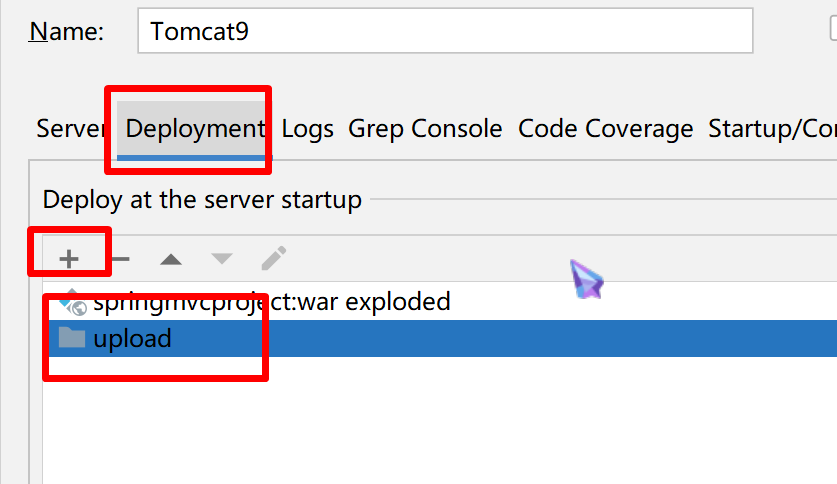
设置完成后,通过 http://localhost:8080/虚拟路径文件夹/文件名,即可获取上传的图片
3.6.2、文件下载
使用ResponseEntity实现下载文件的功能。
将上面上传的文件下载:
<tr>
<td>照片:</td>
<td th:if="${message}eq'上传成功'">
<img th:src="@{'http://localhost:8080/upload/'+${filename}}" width='200px' height='200px'/><br>
<a th:href="@{/downLoadFile(fileName=${filename})}">点击下载</a>
</td>
</tr>
@RequestMapping("/downLoadFile")
public ResponseEntity<byte[]> downLoadFile(HttpServletRequest request, String fileName) throws IOException {
//得到图片的实际路径
String realPath = request.getSession().getServletContext().getRealPath("/upload/");
realPath = realPath+fileName;
//创建该图片的对象
File file = new File(realPath);
//将图片数据读取到字节数组中
byte[] bytes = FileUtils.readFileToByteArray(file);
//创建 HttpHeaders 对象设置响应头信息
HttpHeaders httpHeaders = new HttpHeaders();
//设置图片下载的方式和文件名称
httpHeaders.setContentDispositionFormData("attachment", toUTF8String(fileName));
httpHeaders.setContentType(MediaType.APPLICATION_OCTET_STREAM);
return new ResponseEntity<>(bytes, httpHeaders, HttpStatus.OK);
}
public String toUTF8String(String str) {
StringBuffer sb = new StringBuffer();
int len = str.length();
for (int i = 0; i < len; i++) {
// 取出字符中的每个字符
char c = str.charAt(i);
// Unicode码值为0~255时,不做处理
if (c <= 255) {
sb.append(c);
} else { // 转换 UTF-8 编码
byte b[];
try {
b = Character.toString(c).getBytes("UTF-8");
} catch (UnsupportedEncodingException e) {
e.printStackTrace();
b = null;
}
// 转换为%HH的字符串形式
for (int value : b) {
int k = value;
if (k < 0) {
k &= 255;
}
sb.append("%" + Integer.toHexString(k).toUpperCase());
}
}
}
return sb.toString();
}
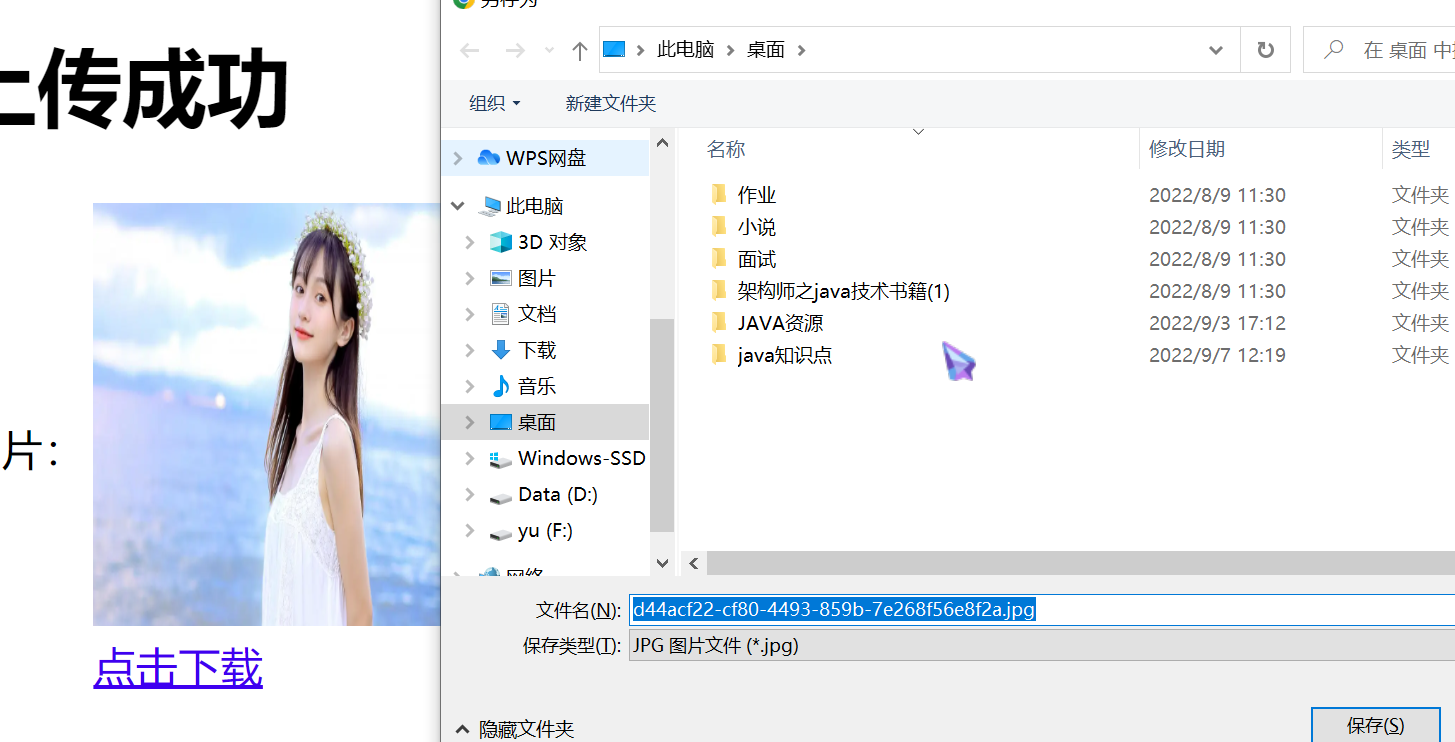

3.7、国际化配置
国际化(i18n)(internationalization的首末字符i和n,18为中间的字符数)是指软件开发时应该具备支持多种语言和地区的功能。也就是根据不同国家显示不同的语言(中国人阅读为汉语,美国人为英语,韩国人为韩语等等)。
在 Spring 项目中实现国际化,通常需要以下 4 步:
-
编写国际化资源文件:文件名格式为:基本名-语言代码-国家或地区代码,例如 messages_zh_CN.properties。
userName=用户名 password=密码 welcome=欢迎您 submit=提交 reset=重置 userName=userName password=password welcome=Welcome submit=submit reset=reset写完之后IDEA会自动归类这种文件

-
在Spring MVC xml配置文件进行配置
<!-- 国际化配置:对资源文件进行绑定 --> <bean id="messageSource" class="org.springframework.context.support.ResourceBundleMessageSource"> <property name="basename" value="messages"/> <property name="defaultEncoding" value="UTF-8"/> <property name="cacheSeconds" value="0"/> </bean> <!-- 在界面上进行切换,Session --> <bean id="localeResolver" class="org.springframework.web.servlet.i18n.SessionLocaleResolver"> <property name="defaultLocale" value="en_US"/> </bean> <!--用于获取请求中的国际化信息并将其转换为 Locale 对象,获取 LocaleResolver 对象对国际化资源文件进行解析。--> <mvc:interceptors> <bean class="org.springframework.web.servlet.i18n.LocaleChangeInterceptor"> <property name="paramName" value="lang"/> </bean> </mvc:interceptors> -
在页面中获取国际化内容;
<body> <h1 th:text="主页+#{welcome}"></h1> <tr> <td th:text="#{userName}"></td> <td><input type="text" name="userName" required><br></td> </tr> <tr> <td th:text="#{password}"></td> <td><input type="password" name="password" required><br></td> </tr> <tr> <td colspan="2" align="center"> <input type="submit" th:value="#{submit}"> <input type="reset" th:value="#{reset}"> </td> </tr> <a th:href="@{/localeChange(lang=en_US)}">英文</a> <a th:href="@{/localeChange(lang=zh_CN)}">中文</a><br/> </body> -
编写控制器方法手动切换语言。
@Controller public class I18nController { @Autowired private ResourceBundleMessageSource messageSource; @RequestMapping("/localeChange") public String localeChange(Locale locale) { String userName = messageSource.getMessage("userName", null, locale); String password = messageSource.getMessage("password", null, locale); String submit = messageSource.getMessage("submit", null, locale); String reset = messageSource.getMessage("reset", null, locale); return "index"; } }
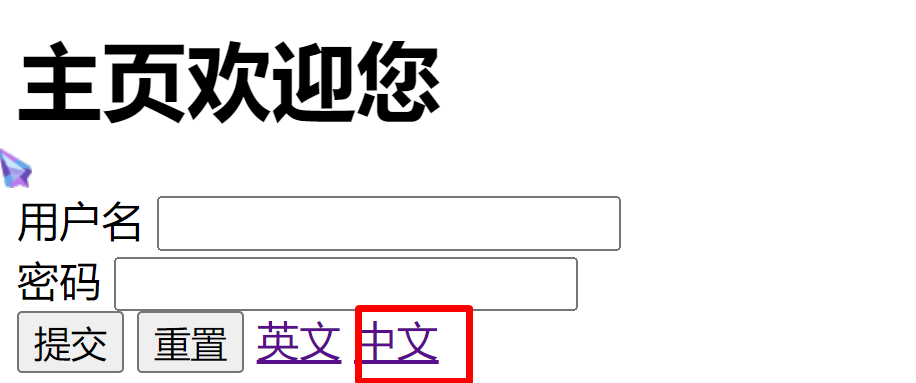
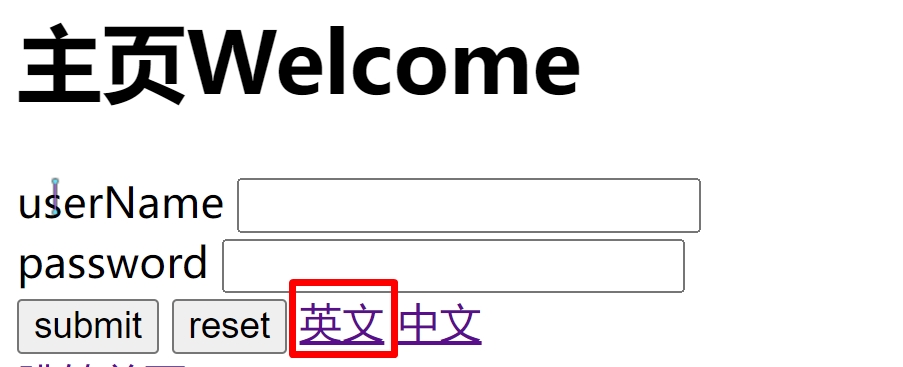
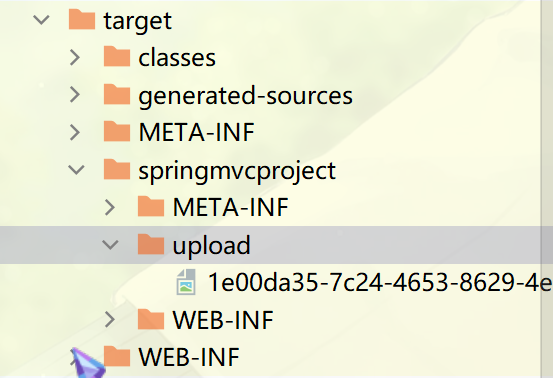















![[深入理解SSD系列综述 1.5] SSD固态硬盘参数图文解析_选购固态硬盘就像买衣服?](https://img-blog.csdnimg.cn/img_convert/0692bee0cbc042e8a32ce5869ca25185.png)





